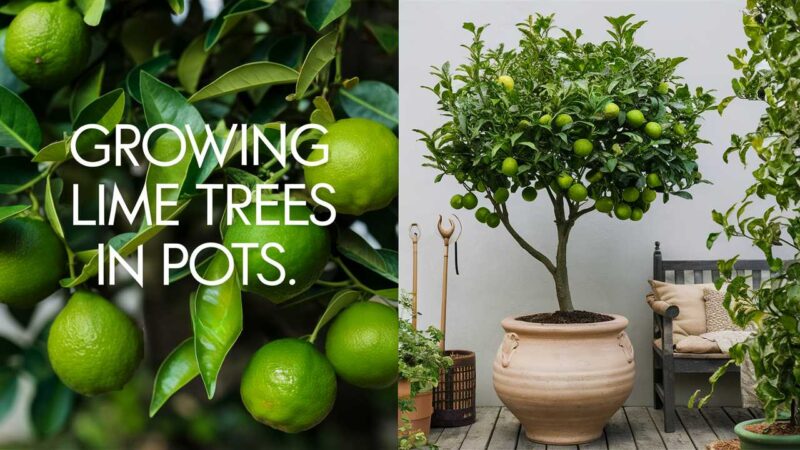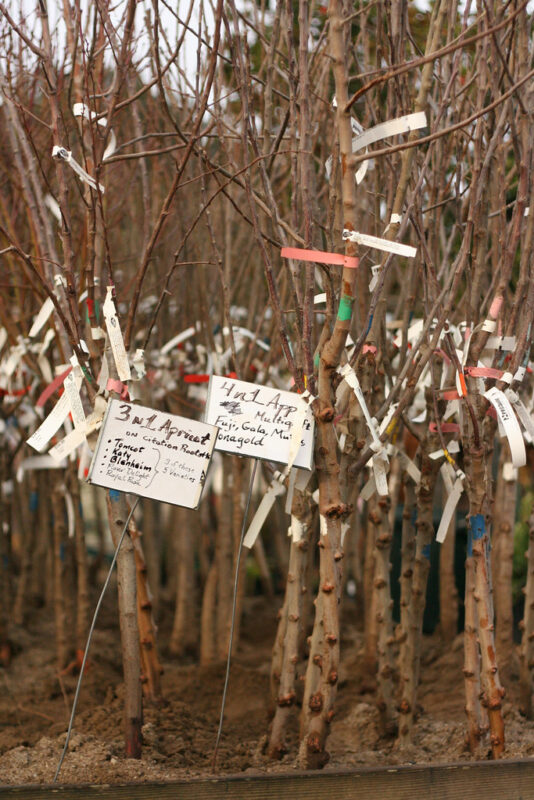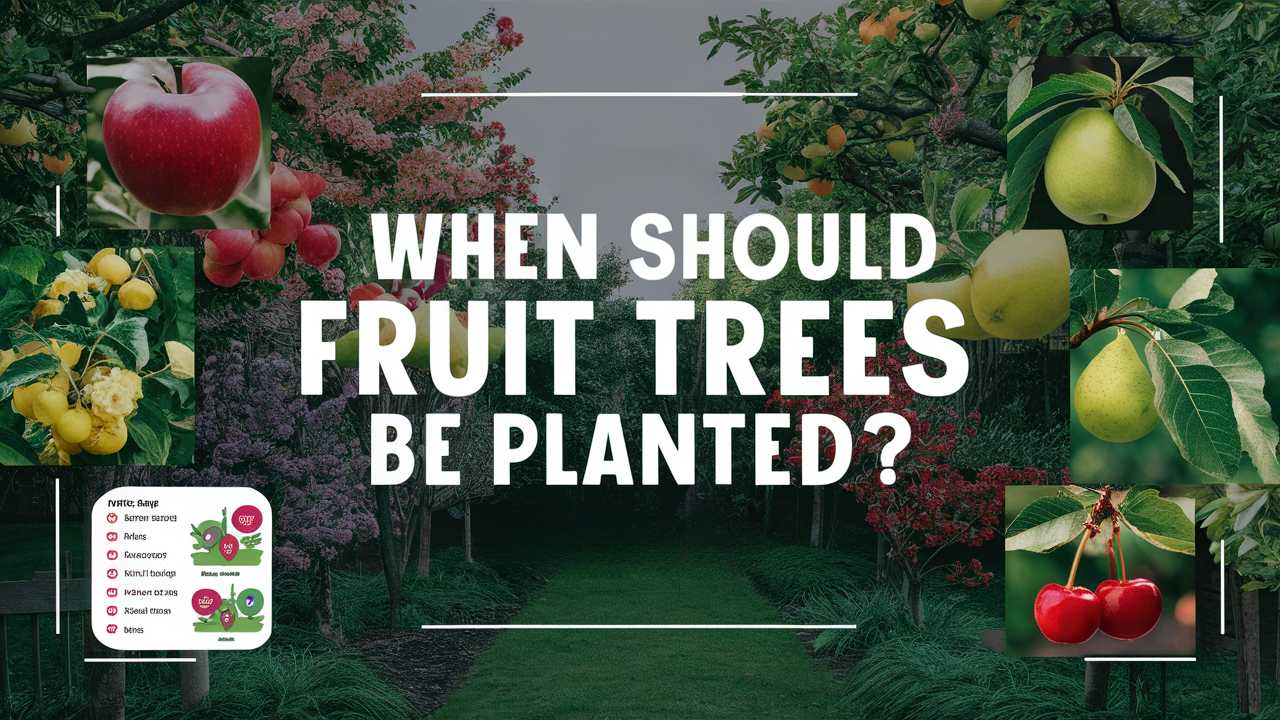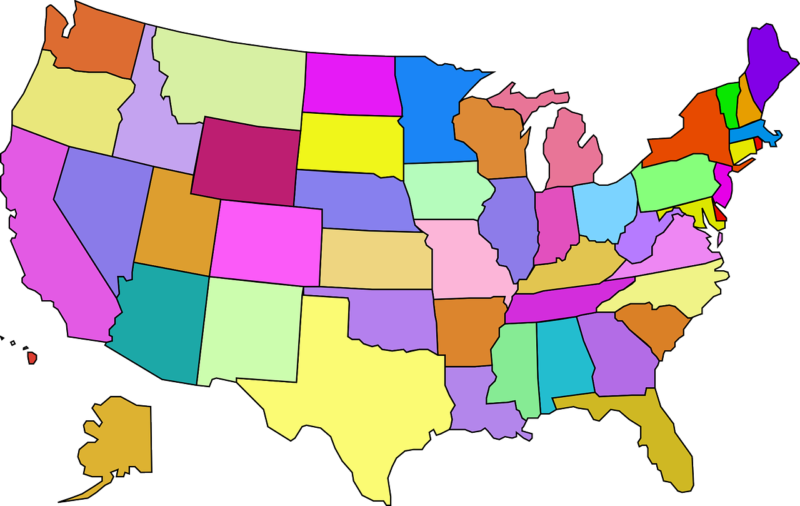This comprehensive guide will walk you through the best times to plant fruit trees, considering various factors including hardiness zones, specific states, types of trees, and seasonal considerations.
When to Plant Fruit Trees by USDA Hardiness Zones

Understanding your USDA Hardiness Zone is fundamental when deciding when to plant fruit trees. The USDA Hardiness Zone map classifies areas based on their average annual minimum temperature. This classification can guide you in selecting the appropriate time for planting and growing various fruit trees.
For instance, if you live in a colder zone (like Zone 3 or 4), the best time to plant fruit trees is in early spring, after the last frost has passed. Frost is especially detrimental during the blooming period, so waiting ensures that delicate buds are protected. In warmer zones (zones 7-10), you often have the flexibility to plant in fall or spring; late fall planting is usually best as it allows trees to establish roots before winter sets in.
Knowing your zone will not only inform you about when to plant but also about which varieties of fruit trees are best suited for your area, maximizing the chances of success.
When to Plant Fruit Trees by State
Each state in the U.S. has its unique climate conditions that influence the ideal planting time for fruit trees. Here’s a detailed look at when fruit trees can be planted in each of the 50 states:
Alabama: Late winter to early spring is ideal. Trees planted before the last frost thrive.
Alaska: Due to the short growing season, plant trees in late spring when temperatures warm up.
Arizona: Late winter or early spring works best, especially for stone fruits like cherries.
Arkansas: Late winter to early spring is optimal, avoiding frost.
California: Plant in late winter to early spring, taking advantage of the mild climate.
Colorado: Early spring after the last frost is ideal for most varieties.
Connecticut: Late April to early May is perfect for planting, after frost.
Delaware: Mid-spring is best, once the danger of frost has passed.
Florida: Plant year-round, but late winter is most favorable for new trees.
Georgia: Early spring is ideal; plant by March to get established before summer heat.
Hawaii: Year-round planting is possible, but aim for early spring for optimal growth.
Idaho: Plant in late spring, after the last frost, for the best results.
Illinois: Early spring is preferable; avoid frost-sensitive stages.
Indiana: Late April is ideal for planting fruit trees, after the risk of frost.
Iowa: Plant in early spring when the ground is workable.
Kansas: Late winter to early spring works best, ensuring frost has passed.
Kentucky: Early spring is preferable for planting fruit trees.
Louisiana: Spring planting is ideal; the growing season is long and warm.
Maine: Late spring planting is recommended after frost.
Maryland: Plant in mid to late spring for optimal establishment.
Massachusetts: Late April through early May is best to avoid frost.
Michigan: Plant in early spring, once frost danger subsides.
Minnesota: Late April to May is the ideal timeframe for planting.
Mississippi: Early spring is a good time to plant fruit trees.
Missouri: Plant in early spring, after the last frost.
Montana: Late spring is ideal due to cooler temperatures.
Nebraska: Early spring planting is best when the ground is thawed.
Nevada: Late winter to early spring is optimal, especially in the southern regions.
New Hampshire: Late spring, after the last frost, is best.
New Jersey: Mid-spring is ideal for planting fruit trees.
New Mexico: Late winter to early spring is typically fine for most varieties.
New York: Late April to early May is perfect for planting tree varieties.
North Carolina: Early spring is favored for planting.
North Dakota: Plant in late spring after risk of frost.
Ohio: Plant in early spring, ideally after the last frost.
Oklahoma: Late winter to early spring is ideal for planting.
Oregon: Early spring is recommended for optimal growth.
Pennsylvania: Mid-spring is best, allowing for frost-free planting.
Rhode Island: Late April to early May is optimal for planting.
South Carolina: Early spring works best for most fruit trees.
South Dakota: Plant in late spring when temperatures warm.
Tennessee: Early spring is preferred for successful planting.
Texas: Depending on the region, early to late spring is suitable.
Utah: Late spring is generally the best time for planting trees.
Vermont: Late spring planting post-frost is ideal.
Virginia: Best time is early spring after the last frost.
Washington: Spring planting is optimal for establishment.
West Virginia: Late spring planting after frost is recommended.
Wisconsin: Plant in late April or early May for best results.
Wyoming: Late spring is best due to cooler temperatures.
Every state has its particular nuances, so researching the local climate is essential for effective planting and establishing your fruit trees.
When to Plant Fruit Trees by Type
Different types of fruit trees have specific needs and optimal planting times. It’s essential to understand the category your desired trees fall into.
When to Plant Containerized Fruit Trees & Why

Containerized fruit trees can be planted at different times during the year, unlike bare-root trees which are typically limited to certain seasons. Spring is often regarded as the best time, as it allows trees to take advantage of the growing season immediately after planting. However, if you live in a milder climate, fall planting can also be beneficial, as the cooler temperatures reduce stress on the tree and give the roots time to establish before winter sets in.
One of the advantages of containerized trees is that they can be planted when the ground is workable and not frozen, making them more flexible for gardeners. They also tend to have a higher survival rate since they are already acclimatized to a growing environment and can handle transplanting with less shock.
When to Plant Bareroot Fruit Trees & Why

Bare-root fruit trees are generally best planted in early spring while the trees are still dormant, typically between late March and early April, depending on your location. The rationale behind this timing is to allow trees to establish roots before the growing season begins.
When planted bare-root, the tree’s energy goes into developing a robust root system rather than supporting foliage, leading to stronger growth in subsequent years. It is crucial to plant as soon as you receive your bare-root trees, as they are vulnerable to drying out.
Best Time to Plant Fruit Trees By Season
Spring: This is the most common time for planting fruit trees. As the ground thaws and temperatures rise, trees awaken from dormancy and adjust better to their new environment.
Summer: Planting in summer can be tricky due to the heat stress and drought conditions. However, with adequate watering and care, some trees can still thrive if planted early in the season.
Fall: Fall is another excellent time to plant, especially for containerized trees. As temperatures cool, the roots can establish before the ground freezes, allowing for a head start in spring.
Winter: Generally, winter is not recommended for planting fruit trees. Ground conditions are typically too cold and frozen for proper root establishment.
Understanding the seasonal timeline can significantly impact the growth and yield of your fruit trees.
USDA Plant Hardiness Zones
As mentioned earlier, the USDA Plant Hardiness Zone map is a valuable resource for gardeners to determine suitable plants for their climate. There are 13 zones, ranging from Zone 1 (coldest) to Zone 13 (warmest), and each zone reflects temperature variations, which can affect fruit tree survival and productivity.
For example, if you live in a warmer zone like 9, you can experiment with subtropical fruit trees such as citrus or avocado, while in Zone 4, you may focus on cold-hardy varieties like apples or pears. The key takeaway is to choose fruit trees that are compatible with your zone for a successful gardening experience.
Frequently Asked Questions
What Fruits Grow All Year Round?
While most fruit trees have specific growing seasons, certain fruits can be grown year-round in the right climates. Tropical fruits, such as bananas, pineapples, and certain citrus varieties, can produce fruit throughout the year, particularly in warm environments where frosts are not a concern.
What Fruit Trees Can Be Planted Together?
Companion planting is beneficial for fruit trees as it can help with pollination and pest control. Some excellent combinations include apple and cherry trees, which benefit from similar growing conditions. Additionally, planting nitrogen-fixing trees, like hazelnuts, alongside fruit trees improves soil nutrients.
Do Fruit Trees Need to Be Planted in Pairs?
Certain fruit trees, especially those that are not self-pollinating, require cross-pollination to produce fruit. For example, varieties of pears and cherries typically need a compatible partner to achieve viable fruit set. It’s essential to research the specific pollination needs of the trees you plan on planting to ensure fruit production.
What Happens if You Plant Trees Too Close Together?
Planting trees too closely can lead to several issues, such as poor air circulation, increased competition for sunlight and nutrients, and a higher risk of disease. It’s vital to follow the recommended spacing guidelines for each tree type to promote healthy growth and prevent long-term issues.
What is the Easiest Fruit to Grow?
The easiest fruit trees for beginners often include apples, pears, and peaches. These trees are generally hardy, adaptable, and forgiving in terms of care requirements. Furthermore, many dwarf varieties are available that require less space and are easier to manage, making them excellent options for novice gardeners.
When Should Apple Trees Be Planted?
Apple trees are best planted in early spring or late fall, especially in cooler climates. Spring planting allows the tree to take advantage of the growing season, while fall planting can help establish root systems before winter. Ensure that the particular variety suits your hardiness zone.
Can You Plant Fruit Trees in the Fall?
Yes, fall can be an excellent time to plant fruit trees, specifically containerized varieties or bare-root trees. The cooler temperatures and increased rainfall assist with root establishment before the dormant winter months, setting the stage for robust growth in the spring.
Can You Plant Fruit Trees in the Summer?
While not typically recommended, it is possible to plant fruit trees in the summer if you can provide ample water and care. Be mindful of heat stress, and try to do so in early summer when temperatures are milder, providing a chance for the trees to establish before the intense heat of mid-summer kicks in.






